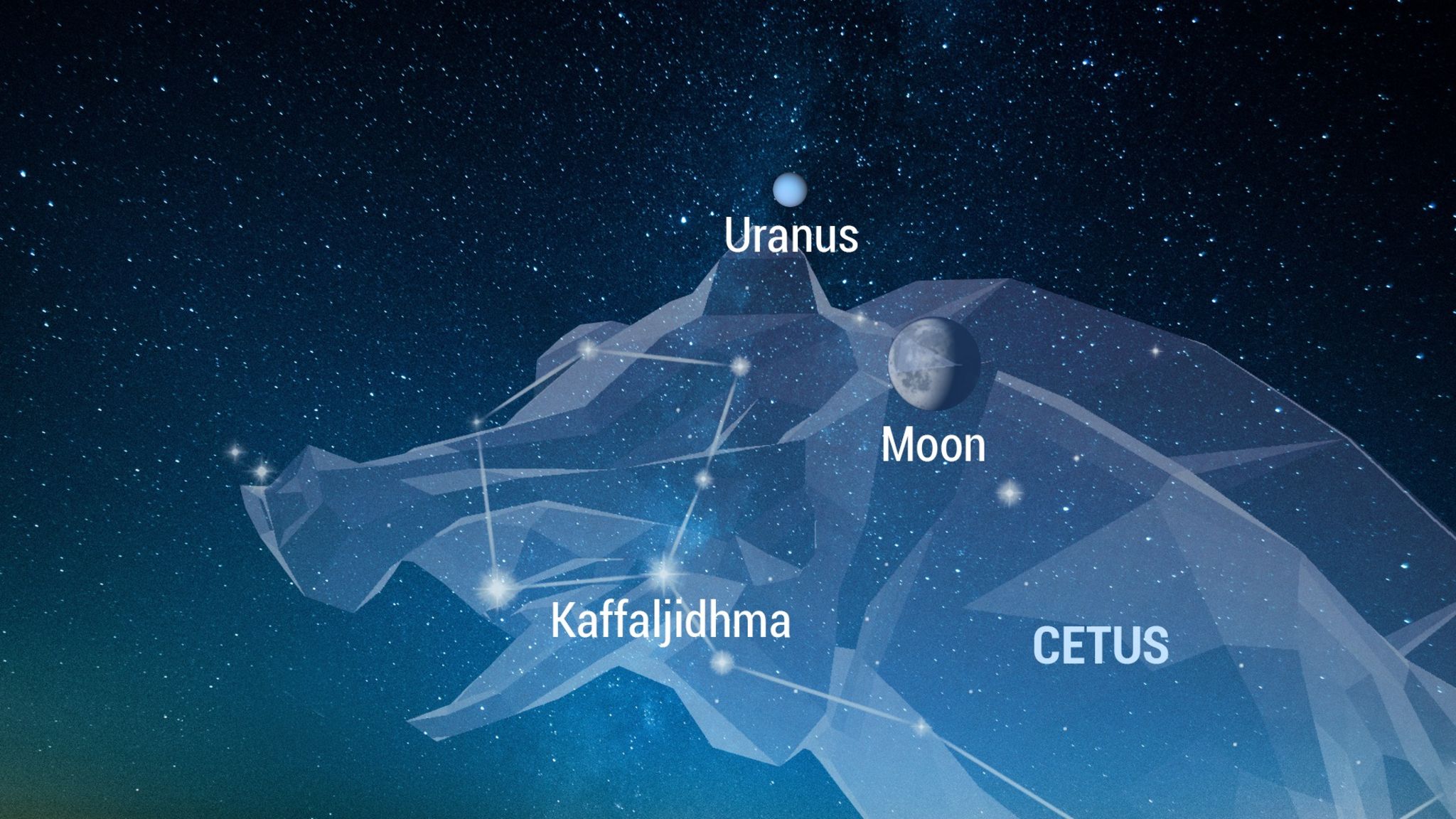Waning Moon Meets Uranus
This week, the moon will depart the evening sky all over the world while it wanes in phase – leaving our nights darker, and ideal for treasure hunting.
For the first few half of this week, the waning gibbous moon will rise in late evening and pass through the modest sea constellations of Cetus (the Whale) and Pisces (the Fishes).
In the southern pre-dawn sky on Wednesday, the moon will be positioned a palm’s width below (to the celestial southeast of) the distant, blue-green planet Uranus. To find the slow-moving planet in the sky, look for a modestly-bright star to the upper left of the moon. That star is Xi Ceti, also known as Al Kaff al Jidhmah (spellings vary). Slow-moving Uranus will remain about four finger widths above (or celestial northeast of) Xi Ceti for the next several months, allowing you to locate Uranus in binoculars and telescopes after the bright moon moves away.
Blue-green Uranus will be rising in the east shortly before 11 pm local time this week; and it will be visible all night long. Uranus is sitting below (celestial south of) the stars of Aries (the Ram) and is just a palm’s width above the head of Cetus (the Whale). At magnitude 5.8, Uranus is actually bright enough to see in binoculars and small telescopes, under dark skies.
Because it rises earlier every night, Uranus is transitioning into a good evening target. As mentioned above, you can use the three stars that form the top of the head of the whale (or sea-monster in some tales) to locate Uranus for months to come - since the planet moves so slowly in its orbit.
Our comprehensible astronomy app Star Walk 2 will help you to catch Uranus and any other celestial object in the sky over your location.
Keep looking up and enjoy the night sky!
